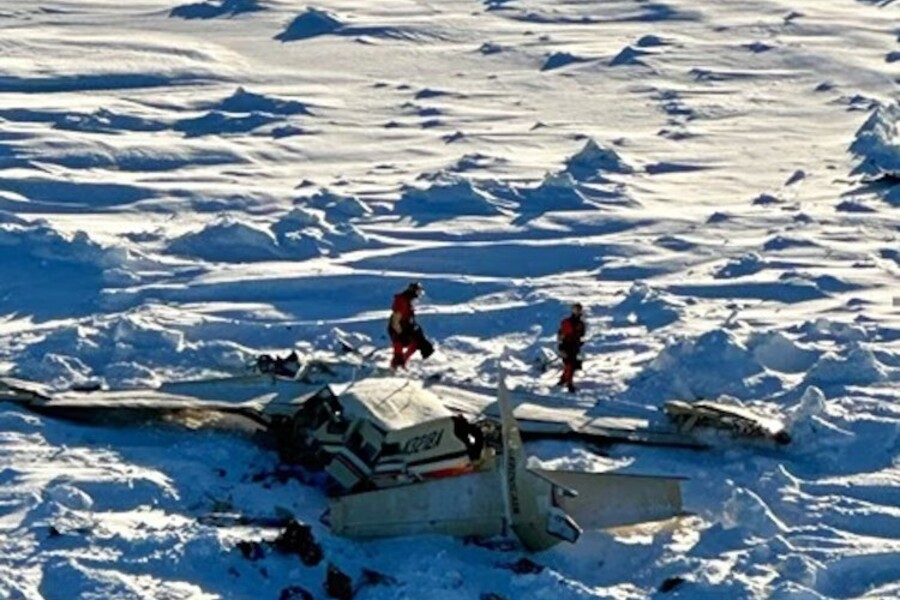The wreckage of Bering Air Flight 445, which went missing Thursday, has been found on sea ice approximately 34 miles southeast of Nome, Alaska. Authorities fear that all ten individuals on board, including nine passengers and the pilot, have perished.
The U.S. Coast Guard confirmed the discovery on Friday and released a photo of the crash site. Three bodies were located inside the aircraft, while the other seven victims are believed to remain within the wreckage. Due to the plane’s damaged condition, recovery efforts for the remaining bodies are temporarily delayed.
“Our heartfelt condolences are with those affected by this tragic incident,” the Coast Guard announced in a statement. Alaska State Troopers are now overseeing the process of recovering the deceased. Lieutenant Commander Mike Salerno emphasized that all individuals aboard are presumed dead.
The search began after Flight 445 was reported overdue at 4:30 p.m. on Thursday. The plane, a Cessna 208B, had been traveling from Unalakleet Airport to Nome Airport when it lost contact with air traffic controllers around 3:20 p.m. It was reportedly 12 miles offshore when the aircraft suddenly experienced a rapid loss of altitude and speed, according to radar analysis. Coast Guard Officer Ben McIntyre-Coble described the plane’s sudden descent but refrained from speculating on the cause of the event.
The Coast Guard deployed an MH-60 Jayhawk helicopter to conduct search-and-rescue operations. Rescuers located the wreckage after lowering two swimmers to survey the area. Adverse weather conditions, including poor visibility and freezing temperatures, hampered earlier search efforts overnight.
Multiple agencies collaborated in the search for the missing plane, including the Alaska Army National Guard, Alaska State Troopers, and the Nome Volunteer Fire Department. Severe weather and the remote location of the crash presented significant challenges to the operation.
The National Transportation Safety Board (NTSB) has launched an investigation into the crash. NTSB Chair Jennifer Homendy announced plans to travel to Alaska to lead the inquiry. Investigators will analyze various factors, including mechanical performance, weather conditions, and pilot experience, to determine the cause of the accident. No immediate explanations have been provided, but the rapid descent detected on radar raises questions about possible mechanical failure or external factors.
This tragedy has deeply impacted the close-knit communities served by Bering Air, which provides vital transportation links across Alaska’s remote regions. Local officials and residents have expressed their grief and solidarity with the victims’ families. Nome Mayor John Handley stated, “This is a heartbreaking loss for our community. We will come together to support the families and honor those we have lost.”
Residents are planning a memorial vigil to remember the victims. In the meantime, support services are being mobilized to assist the grieving families. Aviation plays a crucial role in Alaska, where small aircraft often provide the only connection to remote areas. However, the state also experiences a high number of aviation accidents due to harsh weather conditions and challenging terrain.
As the investigation continues, there are calls for a review of aviation safety protocols in Alaska. Experts emphasize that improved safety measures and emergency response resources could help prevent similar incidents in the future. The NTSB’s findings will likely influence these efforts in the months ahead.
For now, the focus remains on recovery and mourning. The loss of Bering Air Flight 445 has left a profound void in the affected communities. Residents of Nome and other nearby towns are uniting to support one another during this difficult time. The tragedy serves as a reminder of both the risks and the resilience associated with life in Alaska’s remote and often unforgiving landscape.
